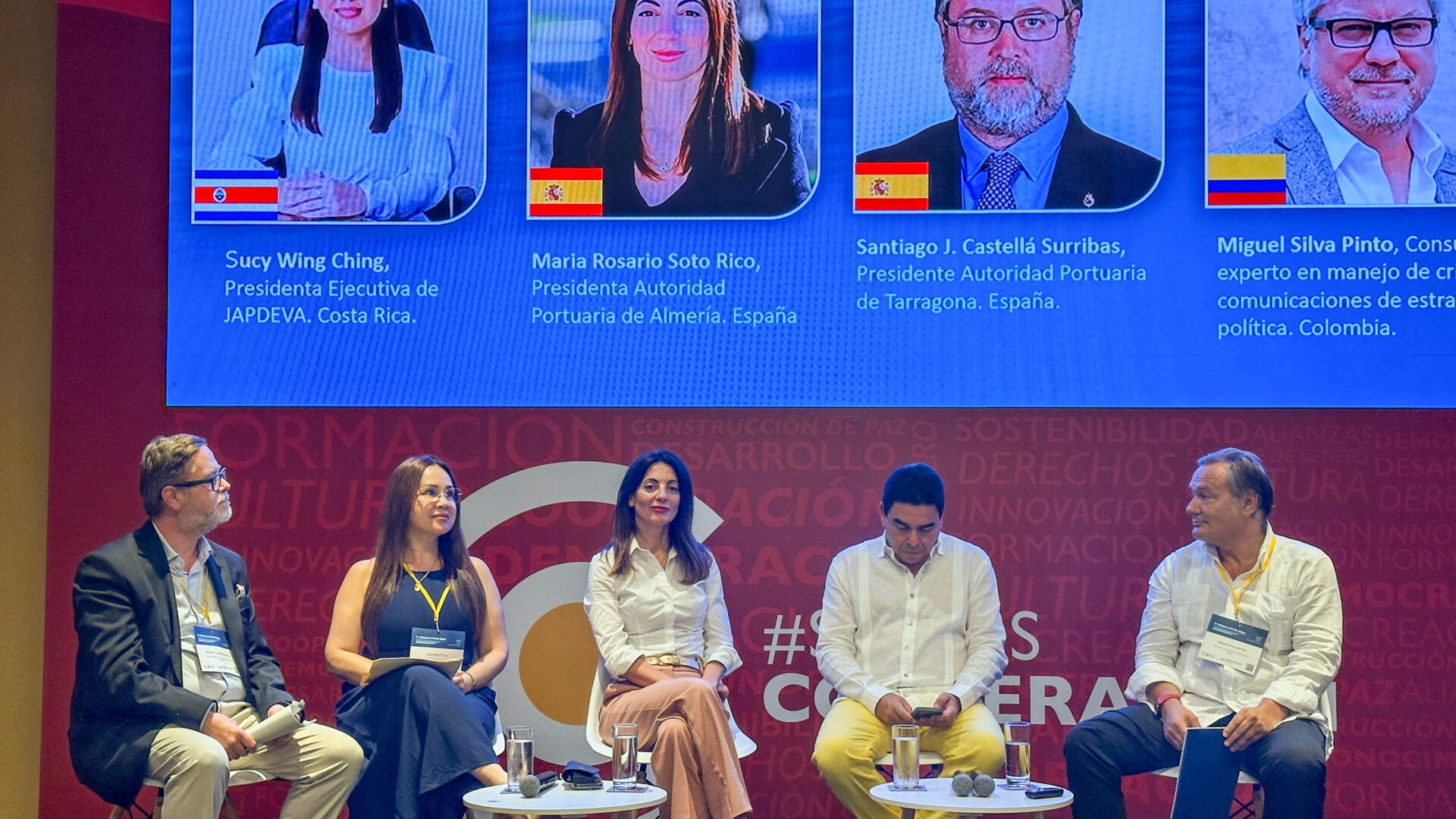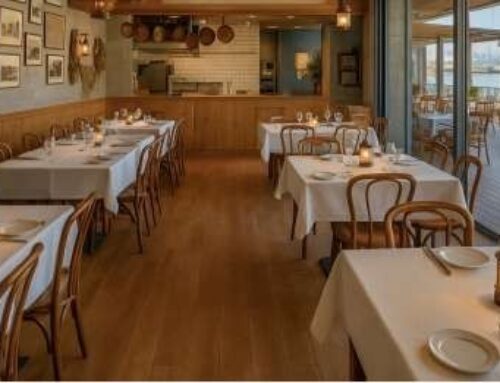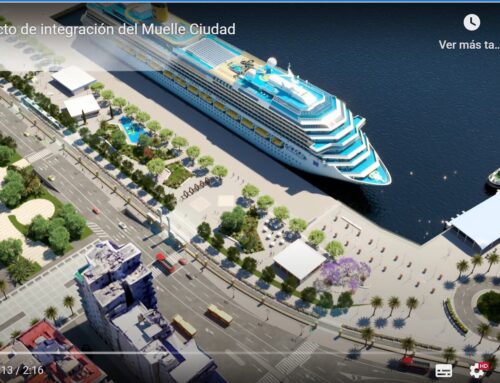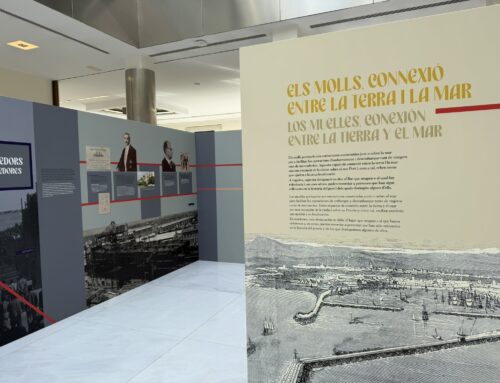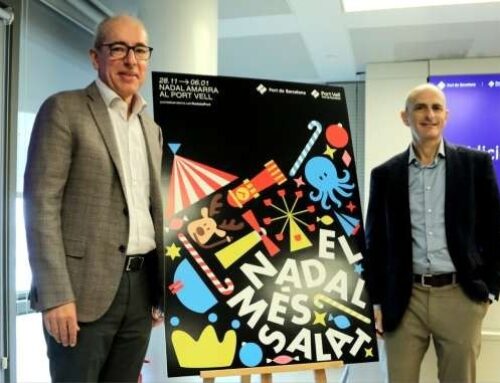The President of the Port Authority of Almería (APA), Rosario Soto, took part in the international meeting I Blue Forum for a Sustainable Caribbean Sea, held in Cartagena de Indias (Colombia). She participated in the thematic block “Blue Sea & Green Port” alongside maritime and port authorities and experts from the Caribbean, Colombia, and Spain, sharing experiences on sustainability, innovation, digitalization, and institutional collaboration.
Within the panel “Institutional collaboration, coordination and cooperation between different public and private institutions,” shared with the Port Authority of Tarragona and the Costa Rican port services company JAPDEVA, Soto presented the Port-City Integration Project, a global investment exceeding 45 million euros. This project, led by the Port Authority of Almería, involves the urban development of six hectares of port land, two of which will be opened to the public by the end of this year. The entire development is expected to be completed by 2028.
As Soto explained, this major initiative is possible thanks to inter-administrative coordination with the Regional Government of Andalusia, which is contributing 15 million euros in funding, and the City Council of Almería, with which collaboration has been essential to ensure that the integration is effective, accessible, and aesthetically harmonious with the city center. The municipality is simultaneously redeveloping Paseo de Almería, connecting it with the port through the Reina Regente area.
Soto detailed that the redevelopment covers the Levante Docks and part of Ribera I, extending to Las Almadrabillas, using emblematic Almería materials such as Cosentino’s Dekton, Macael white marble, granite, and travertine. The project also includes an energy-efficient renovation of the Port Authority’s administrative building, turning it into an architectural landmark, as well as the rehabilitation and public opening of historic port heritage — including the early 20th-century warehouse, the 1960s Wilcox crane, which will become a public viewpoint, and the Deutz locomotive, acquired by the port in 1929.
In addition to the museum-style restoration of these heritage elements, the president announced that the area will feature restaurants, landscaped walking zones, amphitheaters, and spaces for cultural and sporting events, contributing to Almería’s social and tourism revitalization.
area will feature restaurants, landscaped walking zones, amphitheaters, and spaces for cultural and sporting events, contributing to Almería’s social and tourism revitalization.
“The port-city integration represents the greatest urban transformation in Almería in the past thirty ye ars and injects new prospects for the city’s future. Opening Almería to the sea through its port is a unique opportunity,” said Rosario Soto.
The participation of the Port Authority of Almería in this forum aligns with the Strategic Framework of the Spanish Port System of General Interest, which defines one of its main goals as enhancing the international projection of the port network as a benchmark in sustainability, connectivity, and governance. This explains the support of Puertos del Estado, whose president Gustavo Santana also attended the event.
Alongside Almería and Tarragona, other Spanish port authorities — including A Coruña, the Balearic Islands, and the Canary Islands — took part in this thematic block of the Blue Caribbean Forum.

